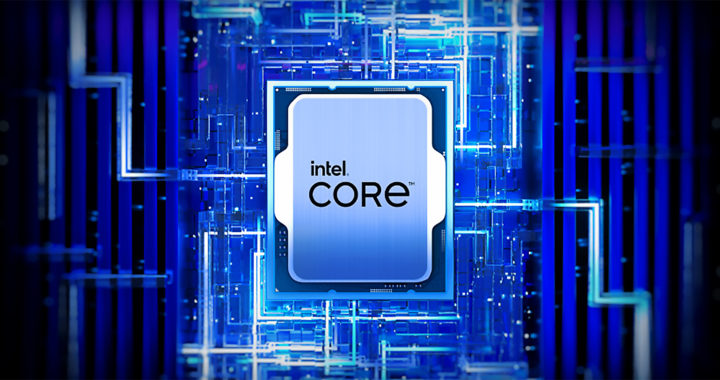The entire Intel Core brand of computer processors has been rebranded. Intel announced on June 2023 new naming conventions and schemes. It later introduced in December 2023 a new line of mobile processors for laptops that also work for desktops. Nevertheless, in line with this rebranding, there are now two new broad categories under the Intel Core brand. These are the regular Intel Core and Intel Core Ultra product lines. These sub-brands have their respective market positioning and recommended use cases or applications. The entire rebranding was aimed at streamlining branding and marketing communications and bolstering the Intel Core brand to respond to the branding strategies of AMD and Apple. This article explains and discusses the difference between Intel Core and Intel Core Ultra.
Intel Core vs Intel Core Ultra: A Comparison and Specific Discussion of Difference Between The Two Intel Core Product Lines
1. Market Positioning
One of the main differences between Intel Core and Intel Core Ultra is their respective market positioning. The regular Intel Core lineup is marketed for the mainstream and broader market segment for desktop and laptop computers. The Intel Core Ultra is marketed as a premium brand of mobile processors for thin laptops. Hence, based on their respective positioning, the latter is more expensive and is featured in high-end laptops and even some desktops. The former has different price points and caters to entry-level and mid-range to high-end segments.
2. Architecture
The base architectures of the two are generally the same. Take note that the 14th generation Intel Core is based on Raptor Lake. The 1st generation of Intel Core Ultra processors are based on the Meteor Lake architecture which is still based on the Raptor Lake architecture but was redesigned for mobile processors. Both also feature a heterogeneous computing or hybrid architecture made of performance cores and efficiency cores. It is worth noting that the Intel Core Ultra has a more complex multi-chip module architecture with more hardware and processor components.
3. Cores and Threads
Another difference between the Intel Core and Intel Core Ultra is the number of their cores and thread counts. Remember that the two feature a hybrid architecture. Intel Core Ultra has more cores and threads with more emphasis on power-efficient multitasking. It has three sets of cores that include performance cores, efficiency cores, and low power efficiency cores. The regular Intel Core has fewer cores and higher tread count with two sets of cores performance cores and efficiency cores. It has more performance cores and focuses more on raw power.
4. Graphics Processing
Not all Intel Core processors come with integrated graphics processing units but most come with either Intel Iris Xe or Intel UHD graphics processors. An integrated graphics processor is a staple in all Intel Ultra Core Processors. Some models under the Core Ultra 5 and Ultra Core 7 come with either an Intel Iris Xe or Intel UHD graphics processor. Core Ultra 9 processors come with the more advanced Intel Arc graphics processors that are better in terms of performance. All Intel Core Ultra processors also have native hardware-accelerative ray tracing capabilities.
5. Artificial Intelligence
Intel Core Ultra processors are designed with AI in mind with their built-in artificial intelligence accelerators to power AI workloads in personal computing. These processors have a dedicated neural processing unit called Intel AI Boost for native handling of AI processes. Both their CPUs and GPUs also feature Intel Deep Learning Boost for native machine learning and deep learning inference processes. Not all regular Intel Core processors have AI accelerators and those that are equipped with one are limited to the Intel Deep Learning Boost component on the CPUs.
6. Specific Use Cases
Take note that processors under either of the two product lines have different capabilities. The regular Intel Core line has diverse models and variations. The Core 3 and Core 5 sub-line are suitable for average or general-purpose use cases while the Core 7 and Core 9 are geared toward high-performance computing. The entire Intel Core Ultra line also caters to demanding tasks or workloads while also focusing on balancing performance and power efficiency and emphasizing native AI acceleration on thin or portable laptop computers and some desktop computers.
In a Nutshell: A Comparison Between Intel Core and Intel Core Ultra in Consideration of Their Capabilities and Recommended Applications
The main difference between Intel Core and Intel Core Ultra is their respective positioning. The former is a more mainstream line of consumer-oriented processors for the broader PC market or across varied market segments. The latter is positioned as a premium line of mobile processors designed to bring advanced processing in light or portable personal computers.
Processors under the Intel Core Ultra line are more expensive because they are equipped with advanced components and technologies. The main difference between these processors versus the processors under the regular Intel Core line is the inclusion of advanced integrated graphics processors, dedicated AI accelerators, and other advanced Intel technologies.
Nevertheless, when it comes to choosing between Intel Core and Intel Core Ultra, it is important to note that the latter is more expensive. A mid-ranger processor under the regular Intel Core line is suitable enough for above-average computing requirements and a high-tier Intel Core 7 or Intel Core 9 is more practical for performance-oriented desktop computers.
The Intel Core Ultra stands out because of its built-in artificial intelligence capabilities and dedicated focus on power efficiency that allow laptop computers running on the Windows operating system to compete with MacBook devices from Apple in applications that involve advanced and extensive content creation such as photo editing and video editing.
